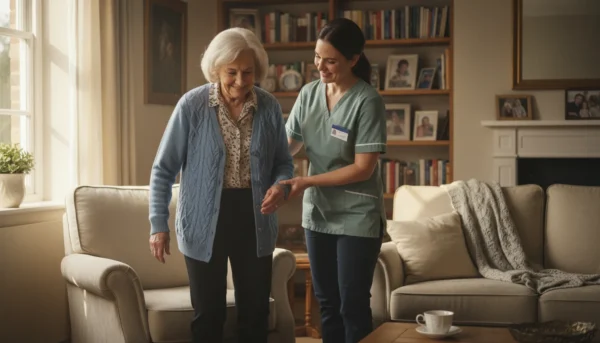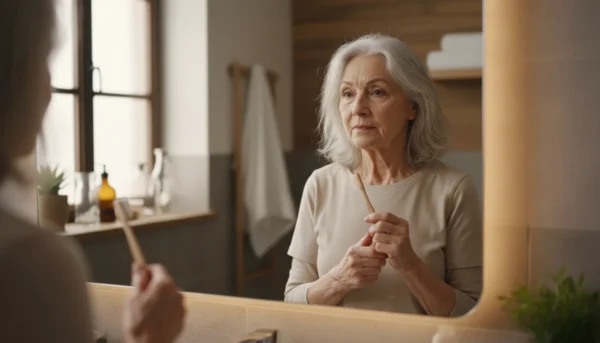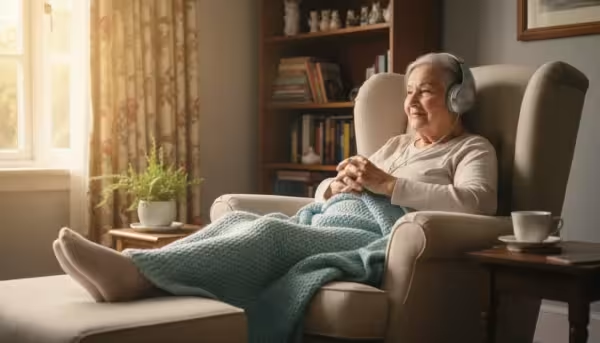
A Step-by-Step Guide to Modifying Your Home Safely
Creating an arthritis-friendly home can be done gradually. You don’t need to overhaul everything at once. Start with the areas that pose the biggest challenges for you. Here is a room-by-room guide to some of the most impactful senior-friendly upgrades.
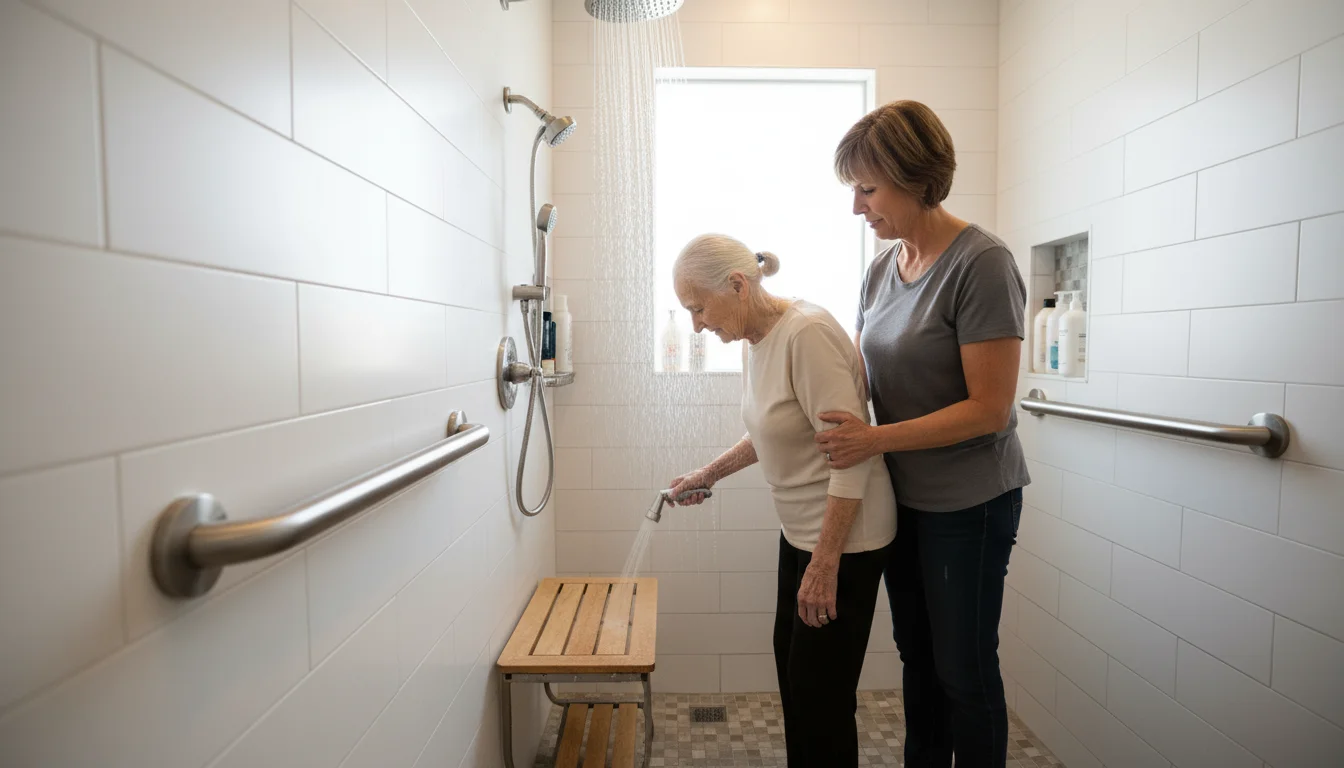
The Bathroom: The Epicenter of Home Safety
The bathroom is often the most hazardous room in the house due to wet, slippery surfaces. Prioritizing modifications here is critical.
- Install Grab Bars: This is non-negotiable. Install sturdy grab bars inside the shower, next to the tub, and beside the toilet. Towel racks are not grab bars and cannot support your weight. Ensure they are installed correctly into wall studs by a professional.
- Consider a Walk-In Shower or Tub: If a full renovation is possible, a curbless or walk-in shower eliminates the need to step over a high threshold. A transfer bench or a built-in shower seat can also provide a safe place to sit while bathing.
- Use a Shower Chair and Handheld Shower Head: These are excellent, lower-cost alternatives. A stable shower chair allows you to sit, reducing fatigue and fall risk, while a handheld shower head makes rinsing easy without difficult maneuvering.
- Raise the Toilet Seat: A raised toilet seat or a comfort-height toilet reduces the distance you have to lower yourself, easing strain on knees and hips. Models with built-in armrests offer even more support for standing up.
- Lever-Style Faucet Handles: Replace round, twist-style faucet knobs with single-lever handles that can be pushed with the side of your hand or wrist.
- Non-Slip Mats: Place non-slip mats or decals inside the tub and shower, and use bath mats with a non-skid backing on the floor outside.

The Kitchen: Making Meal Prep a Pleasure Again
The kitchen involves a lot of gripping, lifting, and standing. These modifications can make cooking easier and more enjoyable.
- Change Cabinet and Drawer Hardware: Replace small knobs with large, D-shaped pulls that you can loop your fingers through instead of pinching.
- Lever-Style Faucet: Just like in the bathroom, a single-lever faucet is much easier to operate than twist-knobs. A model with a pull-out sprayer is also helpful for filling pots.
- Organize for Accessibility: Store frequently used items—plates, glasses, pots, and spices—on lower, easy-to-reach shelves or on the countertop. This avoids painful reaching and stretching.
- Use Lightweight Cookware: Heavy cast-iron skillets can be difficult to manage. Look for lighter alternatives made from materials like carbon steel or hard-anodized aluminum.
- Invest in Assistive Gadgets: An electric can opener, an electric jar opener, and rocker knives (which use a rocking motion instead of pressure to cut) can be lifesavers for arthritic hands.
- Add a Stool or Chair: Keep a sturdy stool or chair in the kitchen so you can sit while chopping vegetables or waiting for something to cook, reducing strain on your back and legs.
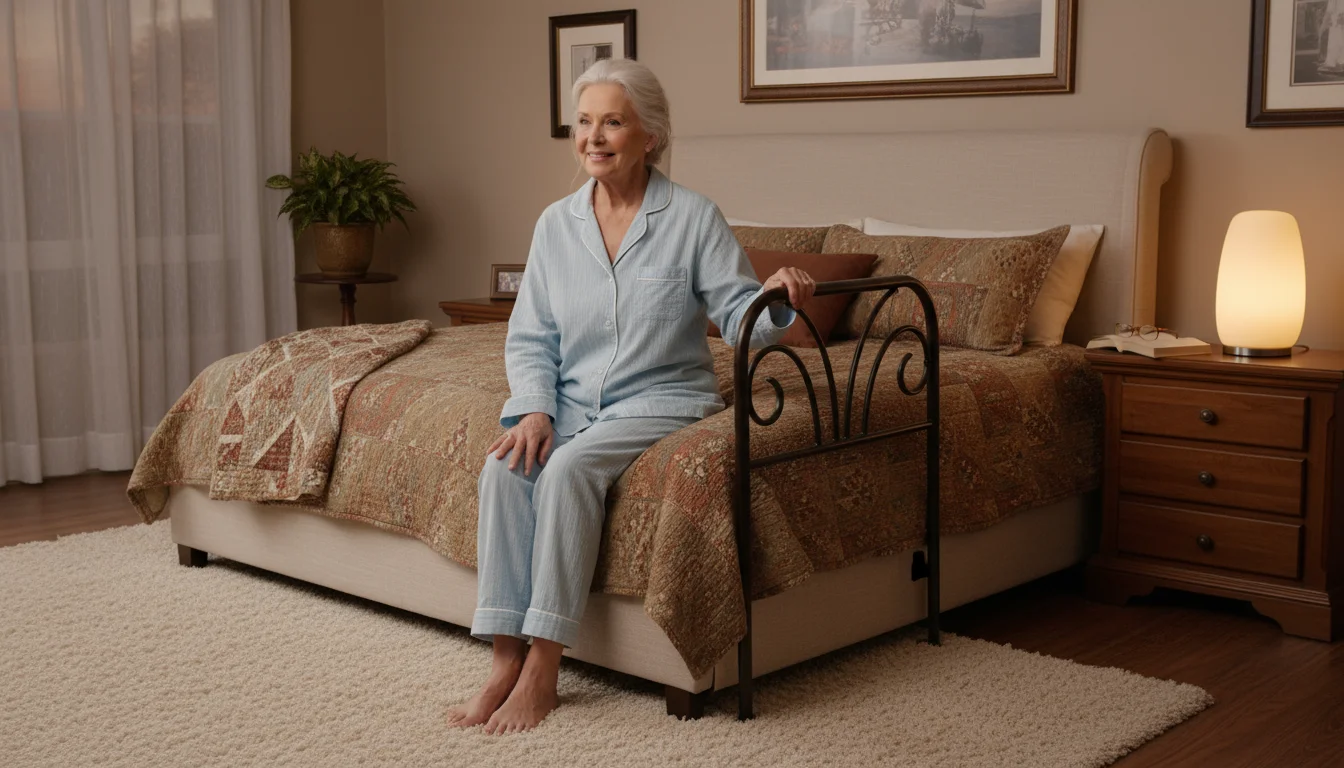
The Bedroom: A Restful and Accessible Retreat
Your bedroom should be a place of rest. These changes ensure you can get in and out of bed safely and comfortably.
- Optimize Bed Height: Your bed should be at a height where you can sit on the edge with your feet flat on the floor. If it’s too high or too low, it can be difficult to get in and out of.
- Install a Bedside Rail: A sturdy bed rail or grab bar can provide a stable handhold for sitting up and standing.
- Ensure Clear Pathways: Keep the path from your bed to the bathroom clear of furniture, cords, and clutter. Add nightlights along the way to illuminate the path in the dark.
- Use Easy-to-Reach Lighting: Place a lamp on your nightstand that has an easy-to-operate switch (like a touch lamp or one with a large push-button). A clapper or a smart, voice-activated light can also be a great option.
- Dressing Aids: Tools like long-handled shoehorns, sock aids, button hooks, and zipper pulls can make getting dressed much less of a struggle.
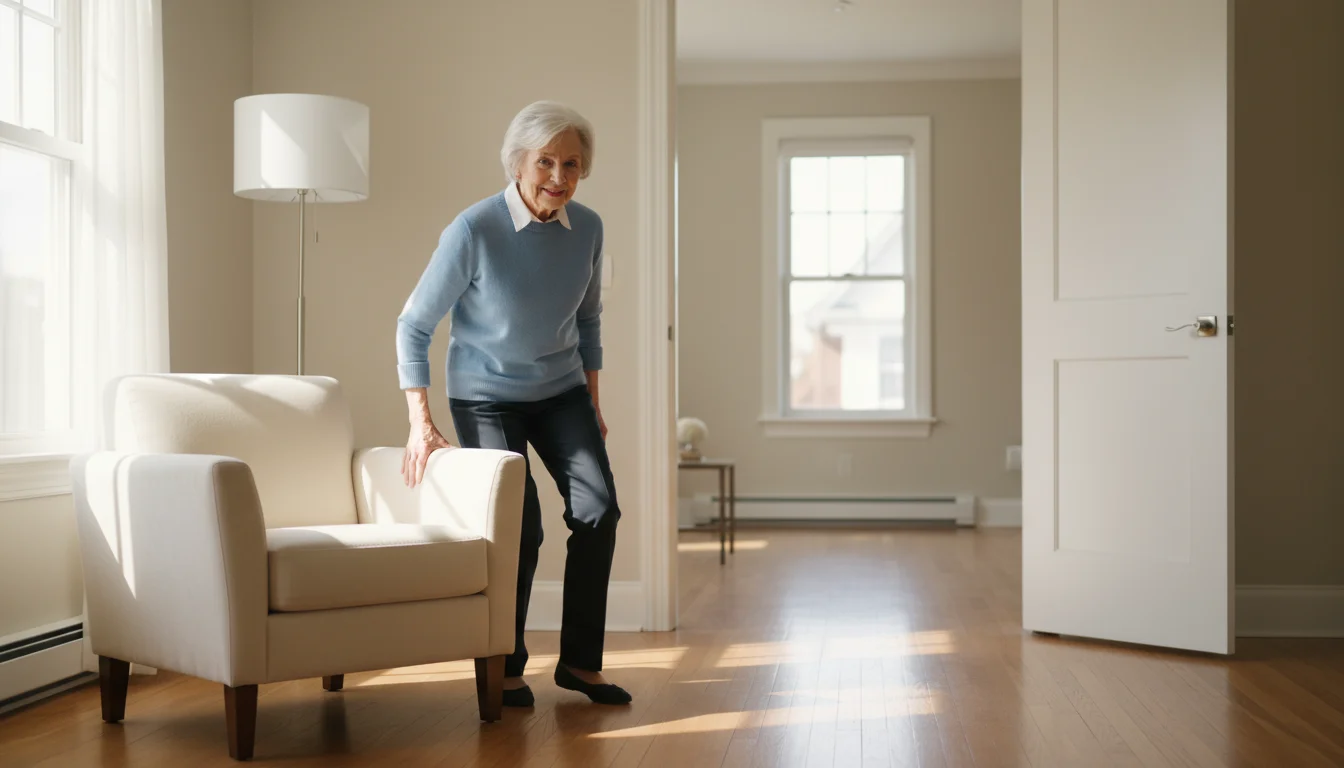
Living Areas and Hallways
General modifications throughout your home can improve overall safety and mobility.
- Remove Tripping Hazards: Secure or remove all throw rugs. Tape down any loose electrical cords along the baseboards.
- Improve Lighting: Ensure all rooms and hallways are well-lit. Use higher-wattage bulbs and add lamps in dim corners. Rocker-style light switches are easier to use than traditional toggle switches.
- Choose Supportive Furniture: Select chairs and sofas that are firm and at a good height, with armrests to help you push up to a standing position. Avoid low, deep couches that are difficult to get out of.
- Replace Doorknobs: Swap out all round doorknobs for lever-style handles, which can be opened with an elbow or the side of a hand.
Authoritative health information for seniors is provided by the National Institute on Aging (NIA) and the Centers for Disease Control and Prevention (CDC).











